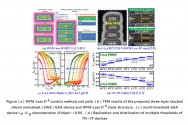As we all know, in the past two years, the United States has continuously included Chinese companies in the "entity list" to suppress them, and at the same time imposed an embargo on some advanced equipment and technologies.
On the one hand, this shows the importance of the semiconductor industry. On the other hand, it is imminent for China to accelerate "domestic substitution".
Therefore, we can see that domestic semiconductor equipment manufacturers continue to expand product categories on the one hand and gradually break the monopoly of foreign manufacturers; on the other hand, they steadily improve product performance and gradually penetrate into the mid-to-high-end market.
At the same time, domestic enterprises are also working hard to increase the utilization rate of domestic equipment and reduce their dependence on foreign equipment to ensure their own production safety.
According to data, at the beginning of 2020, the overall localization rate of wafer equipment in mainland China was only 7.4%, and most links were less than 10%. A large number of fabs try not to use domestic equipment, and are more willing to use foreign equipment.
Because although foreign equipment is more expensive, but the industry chain is better coordinated and the performance is more reliable, we don't want to take the risk of using domestic equipment.
But also starting from 2020, due to the suppression, the logic of equipment import substitution will become increasingly prominent. More and more mainland fabs have begun to set the localization rate as the company's indicator, and use domestic equipment as much as possible.
According to customs data, in October 2022, China's imports of semiconductor equipment decreased by 39.8% compared with the same period last year, and the purchase amount decreased by 23.1%, the lowest level in two years.
According to the statistics of Tianfeng Securities, taking the five fabs that have undergone large-scale public bidding since 2022 as a sample, the localization rate of the semiconductor equipment tendered by these companies from January to July is about 36%.
In other words, within two years, the localization rate of semiconductor equipment has increased from 7.5% two years ago to 36%, which is about five times the original rate.
What does this mean? It means that the domestic semiconductor supply chain has not been idle in the past two years. Everyone is working hard to replace foreign equipment and build a complete and powerful supply chain, and it has achieved remarkable results.
Of course, behind this figure, we also need to see some realities, that is, the localization process of materials in the mid-to-low-end field is currently effective, and the localization rate is increasing year by year. However, the localization rate of high-end fields including polishing liquid, polishing pad, photoresist, and photomask is low, which is also the direction for domestic production to break through.
The reason why the chip industry in the United States is strong is that the United States has the most powerful supply chain, EDA, semiconductor equipment, IP, semiconductor materials, technology and so on.
Today, China's semiconductor supply chain is slowly rising, and it may usher in a major reshuffle of the global semiconductor industry. China's semiconductor industry is on the eve of innovation explosion, let us wait and see.



